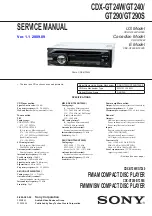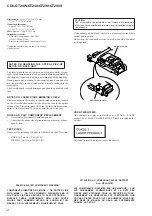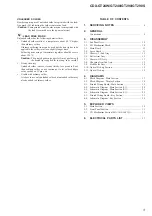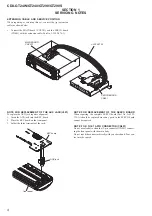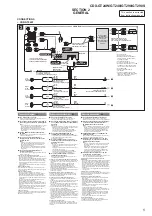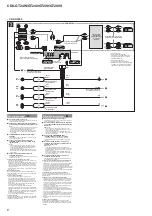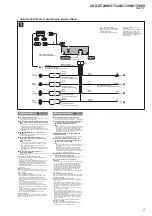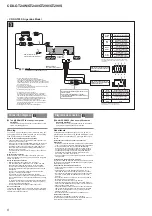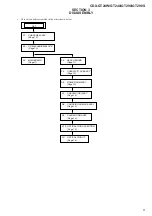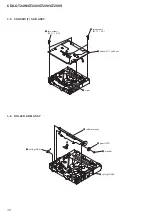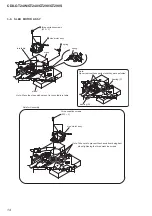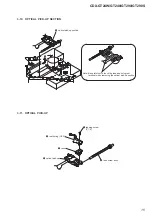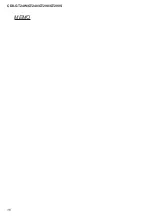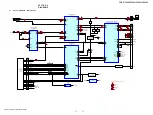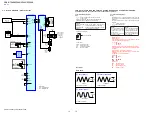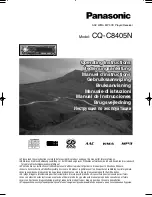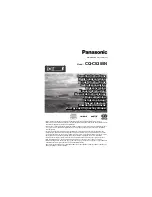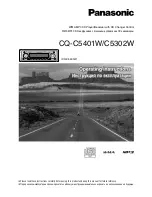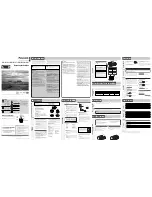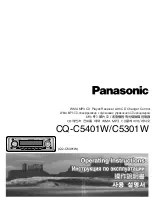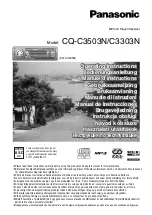
CDX-GT24W/GT240/GT290/GT290S
3
1.
SERVICING NOTES
............................................. 4
2. GENERAL
Connections .................................................................... 5
3. DISASSEMBLY
3-1. Sub Panel Assy ................................................................ 10
3-2. CD Mechanism Block ..................................................... 10
3-3. Main Board ..................................................................... 11
3-4. Servo
Board
.................................................................... 11
3-5. Chassis (T) Sub Assy ...................................................... 12
3-6. Roller
Arm
Assy
.............................................................. 12
3-7. Chassis
(OP)
Assy
........................................................... 13
3-8. Chucking
Arm
Sub
Assy
................................................. 13
3-9. Sled
Motor
Assy
.............................................................. 14
3-10. Optical Pick-up Section .................................................. 15
3-11. Optical Pick-up ............................................................... 15
4. DIAGRAMS
4-1. Block Diagram –Main Section– ..................................... 17
4-2. Block Diagram –Display Section– ................................. 18
4-3. Printed Wiring Board –Main Section– ............................ 19
4-4. Schematic Diagram –Main Section (1/3)– ...................... 20
4-5. Schematic Diagram –Main Section (2/3)– ...................... 21
4-6. Schematic Diagram –Main Section (3/3)– ...................... 22
4-7. Printed Wiring Board –Key Section– ............................. 23
4-8. Schematic Diagram –Key Section – ............................... 24
5.
EXPLODED VIEWS
5-1. Main
Section
................................................................... 30
5-2. Front Panel Section ......................................................... 31
5-3. CD Mechanism Section (MG-101L-188//Q) .................. 32
6.
ELECTRICAL PARTS LIST
.............................. 33
TABLE OF CONTENTS
UNLEADED SOLDER
Boards requiring use of unleaded solder are printed with the lead-
free mark (LF) indicating the solder contains no lead.
(
Caution:
Some printed circuit boards may not come printed with
the lead free mark due to their particular size)
: LEAD FREE MARK
Unleaded solder has the following characteristics.
• Unleaded solder melts at a temperature about 40 °C higher
than ordinary solder.
Ordinary soldering irons can be used but the iron tip has to be
applied to the solder joint for a slightly longer time.
Soldering irons using a temperature regulator should be set to
about 350 °C.
Caution:
The printed pattern (copper foil) may peel away if
the heated tip is applied for too long, so be careful!
• Strong
viscosity
Unleaded solder is more viscous (sticky, less prone to
fl
ow)
than ordinary solder so use caution not to let solder bridges
occur such as on IC pins, etc.
• Usable with ordinary solder
It is best to use only unleaded solder but unleaded solder may
also be added to ordinary solder.

